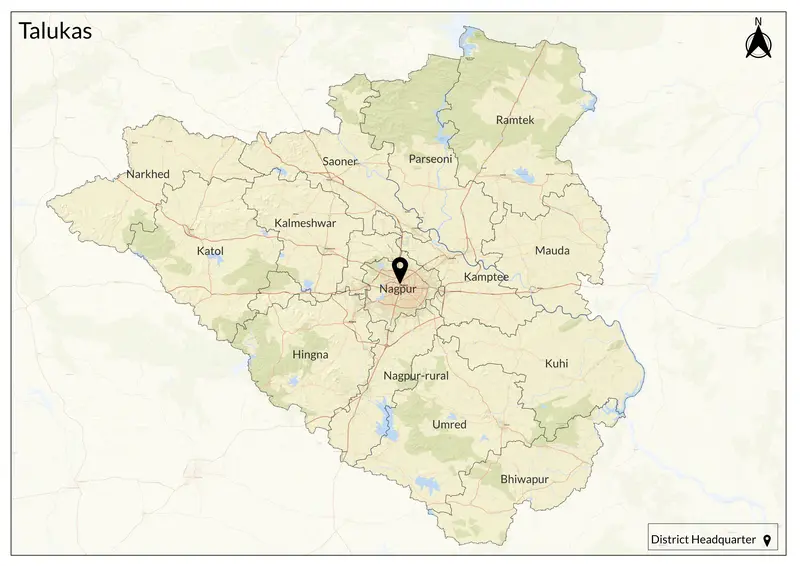Nagpur

9,802 sq. km
~ 52 lakh (2019)
951 (2011)
~ ₹1.06 lakh crore (2019)
~ ₹2.04 lakh (2019)
Nagpur, central India’s premier metropolis and the district, was established as a city in 1702 by Gond King Bakht Buland Shah and rose to regional prominence under the Bhonsale Marathas before becoming part of the British empire in 1853. Archaeologically, Nagpur's ancient heritage shines through sites like Junapani’s megalithic stone circles and the bead-making complex at Mahurjhari, with evidence of human activity stretching from the Iron Age to early historic periods. The city’s name, derived from the Nag River, is famously associated with the British-era "Zero Mile Stone"—constructed to mark the geographical heart of colonial India. It is the winter capital of Maharashtra (after the Nagpur Pact of 1956) and serves as the administrative, commercial, and political center of the Vidarbha region. Nagpur is home to Deekshabhoomi, where Dr. B.R. Ambedkar embraced Buddhism in 1956. It is also the national headquarters of the Rashtriya Swayamsevak Sangh (RSS).
Nagpur’s name is derived from the Nag River, which flows through the city. Historically, it was ruled by the Satavahanas, Vakatakas, Chalukyas, Rashtrakutas, and Yadavas. The Gond kings of the 18th century played a major role in shaping the city, making it their capital. In 1743, the Bhonsle dynasty of the Marathas took control, further strengthening Nagpur's influence. The British annexed it in 1853, making it the capital of the Central Provinces and Berar. Post-independence, Nagpur was briefly the capital of Madhya Pradesh (1950–1956) before becoming part of Maharashtra in 1960.
The city’s environment is shaped by the Deccan plateau’s uplands, multiple rivers (Nag, Kanhan, Pench), and prominent lakes like Ambazari and Gorewada. The area is blessed with lush green spaces, and with forests and tiger reserves (including Pench and Bor) Nagpur is known as the “Tiger Capital of India.” Its tropical climate and access to water have supported continuous settlement for millennia; ancient remains and modern city planning coexist in the landscape. Other important landmarks include Sitabuldi Fort, Ambazari Lake, and Raman Science Centre. The city has significant green spaces, with Gorewada Biodiversity Park and Pench Tiger Reserve nearby.
Nagpur is located in central India, making it a major transportation hub with railway, road, and air connectivity. It is known as the "Zero Mile City" since it marks the geographical center of India. Today, Nagpur is a major economic and industrial center, famous for its orange production, earning it the title "Orange City of India." It is home to MIHAN (Multi-modal International Cargo Hub and Airport), Butibori Industrial Area, and several IT parks. The city also has a strong presence in the mining, power, and manufacturing industries. Nagpur continues to grow with metro projects, expressways, and industrial expansions, making it one of Maharashtra’s fastest-developing cities.
